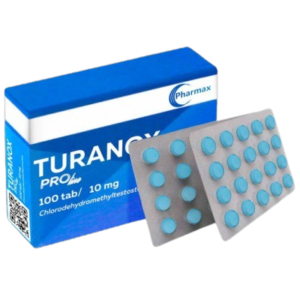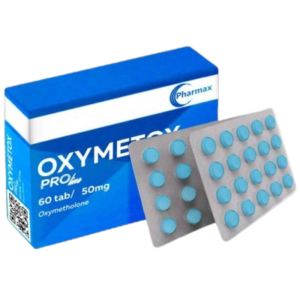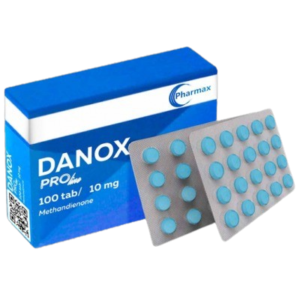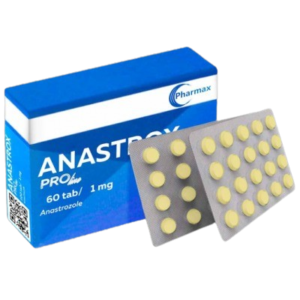-
Turinabol 10 mg
Original price was: €75.00.€44.00Current price is: €44.00. -
Oxymetholone (Anadrol) 50 mg
Original price was: €50.00.€28.00Current price is: €28.00. -
Dianabol 10 mg
Original price was: €50.00.€28.00Current price is: €28.00. -
Arimidex – Anastrozole 1 mg
Original price was: €60.00.€35.00Current price is: €35.00.
Introduction to Steroids: Comprehensive Guide
In today’s world, steroids have become a topic of interest and controversy. Whether it’s their use in sports, bodybuilding, or the medical field, understanding steroids is crucial. This article aims to provide you with a comprehensive guide to steroids, covering their types, effects, legality, and more. So, let’s delve into the world of steroids and gain a deeper understanding.
Understanding Steroids
Brief Overview of Steroids
Steroids, also known as corticosteroids or anabolic steroids, are synthetic substances that resemble the hormone cortisol or testosterone. These substances can have significant effects on the body, both positive and negative.
Importance of Understanding Steroids
It is essential to understand steroids to make informed decisions about their use. Whether you’re an athlete, bodybuilder, or someone considering medical steroid treatment, knowing the facts can help you navigate the associated risks and benefits.
Types of Steroids
Definition of Steroids
Steroids are chemical compounds that play a crucial role in various bodily functions. They can be classified into two main types: anabolic steroids and corticosteroids.
Types of Steroids
Anabolic Steroids: These steroids are synthetic substances that mimic testosterone. They promote muscle growth, increase protein synthesis, and enhance athletic performance. Anabolic steroids are often misused by athletes and bodybuilders to gain a competitive edge.
Corticosteroids: Corticosteroids, on the other hand, are synthetic drugs that mimic cortisol, a hormone produced by the adrenal glands. These steroids are widely used in the medical field to treat various inflammatory conditions and immune system disorders.
Steroids in the Medical Field
Steroids, particularly corticosteroids, have proven to be invaluable in the medical field. They help reduce inflammation, suppress the immune system, and alleviate symptoms of conditions such as asthma, arthritis, and allergic reactions.
Steroids in Sports and Bodybuilding
Steroid use in sports and bodybuilding has long been a controversial topic. Some athletes and bodybuilders misuse anabolic steroids to enhance their performance and gain a competitive edge. However, this practice is against the rules and regulations of most sports organizations.
Anabolic Steroids
Definition and Function
Anabolic steroids are synthetic substances that mimic the effects of the male hormone testosterone. They promote muscle growth, increase protein synthesis, and enhance physical performance. These properties make them appealing to athletes and bodybuilders, despite the associated risks and legal issues.
Benefits of Anabolic Steroids
Muscle Growth: Anabolic steroids significantly increase muscle mass and strength, making them popular among bodybuilders and athletes.
Enhanced Recovery: These steroids help reduce recovery time between workouts by decreasing muscle damage and inflammation.
Increased Red Blood Cell Production: Anabolic steroids boost the production of red blood cells, improving oxygen delivery to muscles and enhancing endurance.
Risks and Side Effects of Anabolic Steroids
Physical Health Risks: Long-term use of anabolic steroids can lead to liver damage, cardiovascular issues, and hormonal imbalances.
Psychological Effects: Users may experience mood swings, aggression, and other psychological changes.
Dependency: There is a risk of developing a dependency on anabolic steroids, leading to withdrawal symptoms upon cessation.
Legal Status of Anabolic Steroids
The use of anabolic steroids without a prescription is illegal in many countries. Sports organizations, including the International Olympic Committee (IOC) and World Anti-Doping Agency (WADA), have strict regulations and testing protocols to prevent steroid misuse among athletes.
Corticosteroids
Definition and Function
Corticosteroids are synthetic drugs that mimic cortisol, a hormone produced by the adrenal glands. They are used primarily for their anti-inflammatory and immunosuppressive properties.
Medical Uses of Corticosteroids
Inflammatory Conditions
Corticosteroids are effective in treating conditions like asthma, arthritis, and inflammatory bowel disease.
Autoimmune Disorders
These steroids help manage autoimmune disorders by suppressing the immune system.
Allergic Reactions
Corticosteroids can alleviate severe allergic reactions and anaphylaxis.
Benefits of Corticosteroids
Reduced Inflammation: Corticosteroids effectively reduce inflammation and associated pain.
Symptom Relief: They provide significant relief from symptoms of chronic inflammatory and autoimmune conditions.
Risks and Side Effects of Corticosteroids
Long-Term Use Risks: Prolonged use of corticosteroids can lead to osteoporosis, weight gain, and increased susceptibility to infections.
Short-Term Side Effects: Users may experience increased appetite, mood changes, and elevated blood pressure.
Legal and Ethical Considerations
Legal Status of Steroids
The legal status of steroids varies by country and type. Anabolic steroids are often classified as controlled substances, requiring a prescription for legal use. Corticosteroids are generally available with a prescription for legitimate medical purposes.
Ethical Considerations in Sports
The use of performance-enhancing drugs, including anabolic steroids, raises ethical questions about fair competition and athlete health. Most sports organizations have strict anti-doping policies to maintain integrity and safety in sports.
Conclusion
Understanding the different types of steroids, their uses, benefits, and risks is crucial for making informed decisions about their use. Whether considering steroids for medical treatment or athletic performance, it’s essential to weigh the potential benefits against the associated risks and legal implications. Stay informed and consult healthcare professionals before considering steroid use to ensure safe and responsible practices.
FAQs
1. What are the main differences between anabolic steroids and corticosteroids?
Anabolic steroids primarily promote muscle growth and enhance physical performance, while corticosteroids are used for their anti-inflammatory and immunosuppressive properties in medical treatments.
2. Are anabolic steroids legal for personal use?
Anabolic steroids are illegal for personal use without a prescription in many countries due to their potential health risks and the possibility of misuse.
3. Can long-term use of corticosteroids cause serious health issues?
Yes, long-term use of corticosteroids can lead to serious health issues such as osteoporosis, weight gain, and increased susceptibility to infections.
4. Why are anabolic steroids banned in sports?
Anabolic steroids are banned in sports because they provide an unfair advantage by enhancing performance and pose significant health risks to athletes.
5. How can someone safely use steroids for medical purposes?
To safely use steroids for medical purposes, it is essential to follow a healthcare professional’s prescription and guidance, monitoring for any side effects or health issues.
Newsletter sign up
The form has been submitted successfully!
There has been some error while submitting the form. Please verify all form fields again.






